sanae takaichi japan news Gender, Politics, and Power
Part 1: The Paradox of Sanae Takaichi’s Popularity and Criticism
Why is Sanae Takaichi — one of Japan’s most prominent conservative politicians and a potential candidate for the nation’s first female prime minister — so divisive? While her leadership skills and policy expertise are widely recognized, she simultaneously faces strong criticism, particularly from liberal and progressive circles. This paradox has made her one of the most talked-about figures in Japanese politics.
The discussion gained renewed attention after a ReHacQ (リハック) interview by producer Hiroki Takahashi, in which he explored why some liberals “dislike” Takaichi. According to Takahashi, the criticism often stems not from her competence but from the discomfort with her background — a woman who succeeded by navigating Japan’s traditionally male-dominated political landscape. Ironically, the very traits that helped her survive and excel in this environment have become the reason she is rejected by some.
In a society still struggling with gender equality, Takaichi’s case reveals deep contradictions: Japan celebrates the idea of a female leader but often resists the reality when that leader challenges established norms. Understanding this dynamic is key to understanding not only why Takaichi divides public opinion but also what her story says about Japan’s social and political evolution.
In the following sections, we will explore her political journey, analyze the roots of this criticism, and uncover how media narratives and cultural expectations shape perceptions of women in power.
Part 2: Who Is Sanae Takaichi? A Brief Political Profile
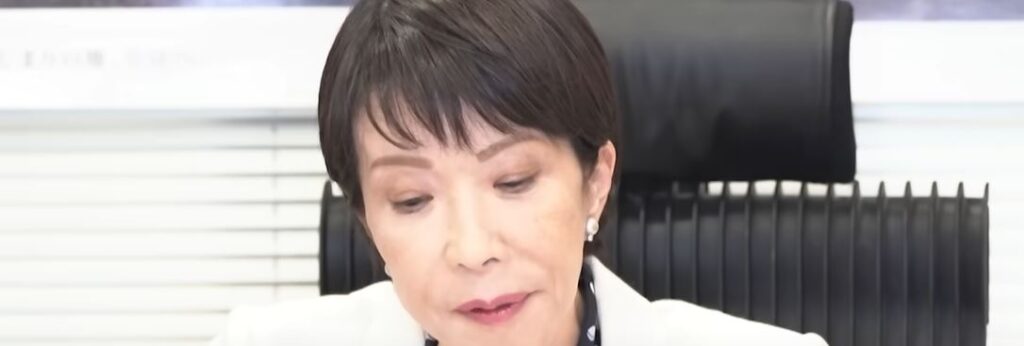
Sanae Takaichi is one of Japan’s most influential conservative politicians and a long-time member of the Liberal Democratic Party (LDP). Born in 1961 in Nara Prefecture, she has built a reputation as a determined policymaker, unafraid to take strong stances on national defense, constitutional reform, and traditional family values. Over the past three decades, Takaichi has held key ministerial positions, including Minister of Internal Affairs and Communications, and has been recognized for her deep policy knowledge and administrative skill.
What sets Takaichi apart is not just her conservative ideology but also her resilience in a male-dominated political world. Early in her career, she faced skepticism and even ridicule from older male politicians, yet she persisted through intense study and policy expertise rather than social networking or factional power. As producer Hiroki Takahashi noted in his ReHacQ interview, Takaichi reportedly avoided social gatherings where inappropriate conversations about “lingerie colors” or adult entertainment took place, choosing instead to focus on policy research and preparation.
Her disciplined and serious approach won her respect from some colleagues but also alienated others. In Japan’s political culture, where informal relationships often drive influence, her decision to distance herself from such environments has been both her strength and her perceived weakness. To her supporters, she represents integrity and focus. To her critics, she appears rigid, unapproachable, and disconnected from the “softer” image expected of women in leadership.
Today, Takaichi remains a symbolic figure — a potential trailblazer as Japan’s first female prime minister and a case study in how gender expectations intersect with political identity. Her story is not just about politics; it’s about how Japan defines power, femininity, and legitimacy in leadership.
Part 3: The “Male Society” Barrier – Why Successful Women Face Backlash

Japan’s political and corporate worlds have long been dominated by men — a reality that creates a paradox for women who rise to positions of power. To succeed, women often need to adapt to the rules and behaviors of this male-dominated environment. Yet, once they do, they are frequently criticized for being “too masculine” or “lacking femininity.” Sanae Takaichi’s career perfectly illustrates this double bind.
According to Hiroki Takahashi’s ReHacQ interview, many critics from liberal circles argue that Takaichi has “become like a man” in order to thrive in Japan’s conservative political culture. However, this criticism reveals a deeper bias: the expectation that women must be gentle, cooperative, and emotional — traits that are often devalued in leadership roles. When a woman exhibits decisiveness or toughness, those same traits that are admired in male leaders are viewed negatively in her.
This social contradiction is not unique to Japan, but it is particularly visible there because of the slow progress in gender equality. As of 2025, Japan ranks 118th out of 146 countries in the Global Gender Gap Report. Women occupy less than 10% of seats in Japan’s Lower House, and few hold senior cabinet positions. Within this context, Takaichi’s rise is both extraordinary and controversial — celebrated as a breakthrough by some, seen as an anomaly by others.
Sociologists describe this phenomenon as the “backlash effect.” When women demonstrate competence in fields traditionally dominated by men, they are often penalized socially for violating gender norms. In politics, this can translate into mistrust or even hostility, as seen in Takaichi’s case. The issue, then, is not her leadership itself, but society’s discomfort with what it represents — the challenge to long-standing hierarchies.
Understanding this “male society” barrier is essential to decoding public reactions to female leaders in Japan. It exposes the subtle cultural forces that continue to shape perceptions of authority, credibility, and womanhood in the nation’s political sphere.
Part 4: The Liberal Dilemma – Why Some Progressive Voices Oppose Takaichi

While Sanae Takaichi’s conservative values have earned her loyal supporters within Japan’s right-leaning circles, they have also sparked resistance from liberals and progressives. Her critics often argue that she represents a step backward for women’s rights, despite being one of the most powerful women in Japanese politics. This contradiction lies at the heart of what can be called the “liberal dilemma.”
In Hiroki Takahashi’s ReHacQ interview, he observed that many progressive viewers “simply cannot accept” Takaichi, not because of her gender, but because of what she symbolizes — a woman reinforcing the conservative system rather than challenging it. Her opposition to policies such as selective married surnames (選択的夫婦別姓) and her cautious stance toward gender quotas have fueled criticism that she prioritizes traditional family structures over equality reforms.
From a liberal perspective, this feels paradoxical: how can a woman who broke through Japan’s male hierarchy not support policies that would make it easier for other women to follow? But Takaichi’s reasoning is deeply rooted in her belief in “individual effort” and “responsibility,” rather than systemic reform. She argues that social change must be organic, not forced by legislation — a viewpoint consistent with her conservative ideology.
This ideological divide highlights the broader struggle between Japan’s conservative establishment and its reformist voices. While liberals advocate for structural change to promote inclusivity, Takaichi and her allies view such reforms as unnecessary interference in personal or family matters. The resulting tension is not simply about gender, but about how Japan defines freedom and social progress.
In essence, the liberal resistance to Takaichi reflects a deeper cultural conflict: the clash between modern egalitarian ideals and traditional moral frameworks. Her political existence challenges both sides — conservatives who resist female power, and liberals who reject conservative women.
Part 5: Media Influence and Public Perception
Public opinion about Sanae Takaichi is not shaped by policy papers or legislative outcomes alone — it is also heavily influenced by the media. From television talk shows to online news platforms, her image is often filtered through commentary that highlights her rigidity, conservatism, or “masculine” style of leadership. This selective framing contributes to a simplified narrative: Takaichi as the “hardline conservative woman,” a label that obscures her nuanced political identity.
Japanese mainstream media has long played a complex role in reinforcing stereotypes around women in power. When male politicians express strong opinions, they are described as “decisive” or “charismatic.” When women do the same, they are often called “aggressive” or “unfeminine.” In Takaichi’s case, the repetition of such language over time creates what media scholars call a “framing effect,” subtly influencing how audiences perceive her personality and intentions.
Moreover, the digital media ecosystem — YouTube, Twitter (X), and online forums — amplifies polarization. Clips from interviews like ReHacQ circulate rapidly, often stripped of context, reinforcing confirmation bias among viewers. Supporters see her as a disciplined reformer who endured sexism to succeed; detractors view her as an embodiment of outdated nationalism. The same footage can fuel two completely different narratives, depending on who is watching.
This phenomenon mirrors a broader global trend where media exposure both empowers and undermines female politicians. As Media, Culture & Society reports, women leaders are twice as likely to have their appearance, tone, or “likability” analyzed rather than their policies. Takaichi’s experience reflects that imbalance vividly. The media spotlight that helped make her a household name has also magnified every aspect of her personality — often to her detriment.
Ultimately, understanding how media narratives shape Takaichi’s reputation is essential for grasping why she divides public opinion. Her story is not just about politics, but about how information, gender, and ideology intertwine in Japan’s modern media landscape.
Part 6: Gender Double Standards in Japanese Politics
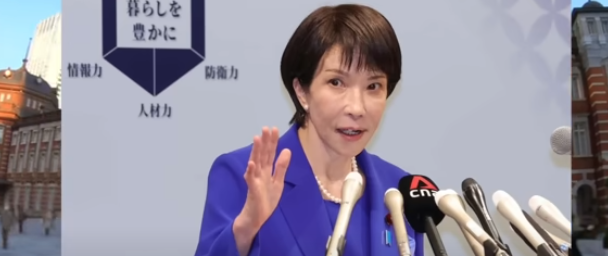
The controversy surrounding Sanae Takaichi cannot be fully understood without addressing the persistent gender double standards in Japanese politics. While Japan has made progress in promoting women to visible positions, its political culture still measures female leaders by different criteria than their male counterparts. This inequality shapes not only how women are treated within institutions but also how the public perceives their legitimacy.
In Japan’s political sphere, confidence in men is often equated with competence, while confidence in women is frequently mistaken for arrogance. When Takaichi speaks firmly about defense policy or constitutional reform, critics sometimes label her as “too aggressive.” Yet, similar statements from male politicians are praised as “strong leadership.” This double standard reinforces the idea that assertiveness is a male trait — an outdated notion that continues to define the boundaries of acceptable behavior for women in power.
A 2024 survey by the Gender Equality Bureau of Japan found that over 60% of respondents still believe that “men are better suited for politics.” This reflects not only entrenched cultural attitudes but also a systemic lack of representation: women make up less than 15% of Japan’s national legislature, one of the lowest rates among developed nations. Such numbers expose the structural barriers that even the most capable women face when entering politics.
Takaichi’s journey through this environment underscores the paradox: she is criticized for being too “male-like,” yet it was precisely those qualities that allowed her to survive and excel. Her story shows that women in Japanese politics are still caught between two impossible expectations — to be strong but not intimidating, ambitious but not threatening, successful but not “too visible.”
Until Japan redefines what leadership looks like, female politicians will continue to face this quiet but persistent discrimination. Breaking these double standards is not only a matter of fairness but also a prerequisite for a more inclusive democracy that reflects the voices of all its citizens.
Part 7: Conclusion – Beyond Labels: What Takaichi’s Case Reveals About Japan’s Future
Sanae Takaichi’s story is far more than a tale of one politician’s rise and controversy — it is a mirror reflecting Japan’s ongoing struggle with gender, tradition, and modernity. Her journey from a policy-focused outsider to a contender for Japan’s highest political office exposes both the progress the country has made and the barriers that remain. The debate around her is not simply about ideology, but about what kind of leadership Japan is ready to accept.
Takaichi’s experience forces Japanese society to confront a difficult question: can the nation truly embrace a woman in power if she does not fit the expected mold of “feminine leadership”? For many, her assertiveness and conservative principles challenge deep-seated assumptions about what women in authority should look like or believe in. Yet, her persistence and competence also show that leadership is defined not by gender, but by capability, conviction, and consistency.
As Japan faces pressing challenges — demographic decline, technological transformation, and shifting global alliances — it needs diverse leadership more than ever. Breaking the gender stereotypes that have long constrained its politics will not only expand opportunities for women but also enhance the nation’s decision-making strength. True equality begins when society stops labeling strong women as “exceptions” and starts recognizing them as leaders in their own right.
Sanae Takaichi may or may not become Japan’s first female prime minister, but her presence in the political spotlight already signals a generational shift. She represents a bridge between the old and new Japan — one that still struggles to balance respect for tradition with the need for transformation. Ultimately, her case invites every citizen to reflect on what kind of future Japan wants: one defined by stereotypes, or one guided by merit and equality.
In this sense, the controversy around Takaichi is not a personal story of “likability” or “dislike.” It is a test of how far Japan is willing to go to build a political culture that reflects the diversity of its people — and whether it can finally move beyond the labels that have long defined its leaders.

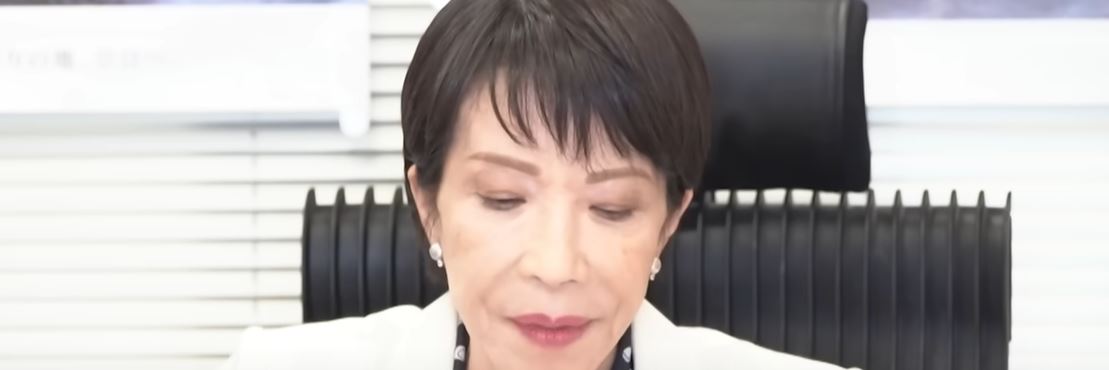
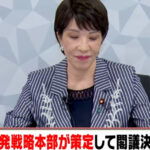

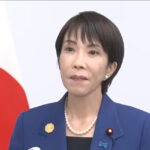

ディスカッション
コメント一覧
まだ、コメントがありません